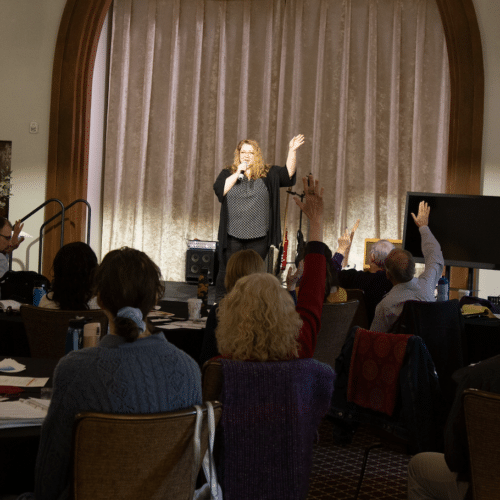The pursuit of innovative designs, sustainable structures, and visionary projects drives the architecture, engineering, and construction (AEC) sector to plan bigger. But amid the grand visions, a critical element exists that ultimately determines the success or failure of any AEC endeavor: project cost control.
Managing budgets effectively, along with preventing costly overruns, is not merely a financial concern but an essential component of delivering quality projects on time to the satisfaction of clients and stakeholders.
This two-part article series breaks down project cost controls in the AEC sector, exploring all aspects from the core components of project cost controls to solutions that facilitate them. Here in Part 1, we explain the central concept of project cost control and explore its application and challenges in the industry.
What is project cost control?
Project cost control is the systematic process of monitoring, managing, and optimizing costs throughout the lifecycle of a project. It ensures expenses remain within the defined budget, preventing overruns and maintaining financial accuracy.
It’s important to note that project cost control differs from cost management. While cost management involves determining initial budgets and allocation of resources, cost control focuses on tracking expenditures throughout the project timeline, ensuring they stay within acceptable bounds. It is a crucial aspect of project management. Without it, budgets can quickly spiral out of control, leading to delays, quality issues, and dissatisfied clients.
The fundamental steps of cost control in AEC projects involve:
- Budget estimation: Accurately estimating the costs of materials, labor, and other resources required for the project.
- Cost monitoring: Continuously tracking expenses to identify discrepancies or potential overruns.
- Change order management: Managing changes in project scope or design and evaluating their impact on the budget.
- Progress monitoring: Regularly assessing project progress and comparing it to the budget to ensure alignment.

How does cost control apply to AEC?
Cost control is not a one-time assessment for any AEC project. It is an ongoing process that permeates all phases, from design to post-construction.
In the design phase, cost control helps with initial budgeting, allowing architects and engineers to establish cost estimates based on project specifications. This phase also involves value engineering, a method to optimize project value while reducing costs, and risk assessment to identify potential financial pitfalls.
During the implementation and construction phase, cost control continues with bid analysis. Here, contractors’ proposals are assessed continuously to ensure they are within budget constraints. Change order management becomes critical at this stage. Any adjustment to the project’s scope can significantly impact the budget and must be monitored to keep the project aligned with the budgetary targets.
Cost control is also relevant in the post-construction phase. Architects and engineers thoroughly evaluate the actual costs incurred throughout the project’s lifecycle and compare them to the initial budget. This process is essential for assessing the project’s financial performance and identifying areas for improvement.

Why AEC budgets blow up
Budget overruns are an alarming concern in the AEC sector, with a staggering 91.5% of big projects going over budget, (Note: can you give a reference for this stat?) over schedule, or both. Across the industry, several common reasons contribute to budget overruns:
- Inaccurate estimations: Initial cost estimates may be too optimistic or based on incomplete information.
- Scope creep: Changes in project scope can lead to unanticipated expenses.
- Unforeseen challenges: Unexpected obstacles, such as environmental factors or regulatory changes, can increase costs.
- Poor project management: Inadequate monitoring, decision-making, and risk management can result in financial mismanagement.
Poor cost control in AEC projects can have far-reaching consequences that extend beyond just financial setbacks. Firstly, inadequate cost control often leads to project delays. When expenses exceed the budget, project teams may need to halt progress, renegotiate contracts, or seek additional funding. These delays not only impact the project timeline but can also result in increased labor and operational costs. In some cases, projects become unviable due to extended delays, causing a complete overhaul of project schedules and objectives.
Moreover, as budgets are stretched thin due to cost overruns, project teams may cut corners to save money. This can result in compromised quality, including the use of subpar materials or rushing through critical construction phases. This, in turn, can lead to structural issues, safety concerns, and the need for costly repairs in the future. Quality problems can also damage the company’s reputation, erode client trust, and even lead to legal disputes.

Ultimately, poor cost control can strain the relationship between clients and project stakeholders, leading to frustration, mistrust, and dissatisfaction. This scenario is particularly detrimental in the AEC industry because these client relationships are vital for future business opportunities and referrals.
Unfortunately, budget overruns arising from poor cost controls are all too prevalent. Just look at NASA’s James Webb Space Telescope, which went an alarming 450% over budget, and California’s high-speed rail, which saw its initial budget of $9 billion balloon to $88-$128 billion. These examples serve as stark reminders of how project budgets can blow through their intended limits when effective cost controls are not in place.
Conclusion
Project cost control plays a crucial role in every stage of an AEC project, ensuring projects remain on track and on budget while meeting the expectations of clients and stakeholders. Without its effective application, budget overruns are imminent with dire consequences, including project delays, quality issues, and strained client relationships.
Join us for Part 2, where we delve deeper into project cost control, exploring strategies and tools — like 10xViz’s innovative solutions — that AEC companies can adopt to address these cost control challenges and improve budget monitoring across multiple projects.
For more information about 10XViz and its custom solutions for the architecture, engineering, and construction industries, visit our 10xViz.com today.



